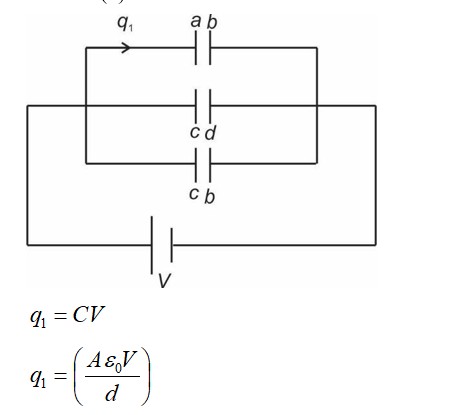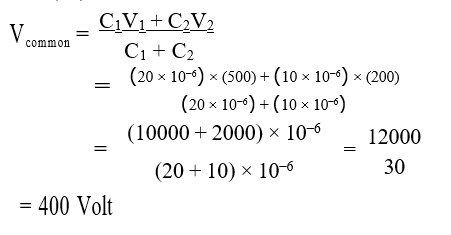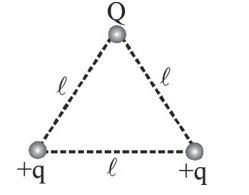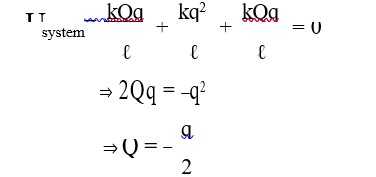An infinite number of point charges, each carrying 1 μC charge, are placed along y-axis at y = 1 m, 2 m, 4 m, 8 m, .................... The total force on a 1 C point charge, placed at the origin is x×103 N. The value of x, to the nearest integer, is..................
[Take 1/(4πε?) = 9×109 Nm2/C2]
An infinite number of point charges, each carrying 1 μC charge, are placed along y-axis at y = 1 m, 2 m, 4 m, 8 m, .................... The total force on a 1 C point charge, placed at the origin is x×103 N. The value of x, to the nearest integer, is..................
[Take 1/(4πε?) = 9×109 Nm2/C2]
-
1 Answer
-
F = (qQ)/ (4πε? r? ²) + (qQ)/ (4πε? r? ²) + (qQ)/ (4πε? r? ²) + (qQ)/ (4πε? r? ²) + .
⇒ F = (qQ)/ (4πε? ) [1/1² + 1/2² + 1/4² + 1/8² + .]
⇒ F = (qQ)/ (4πε? ) [1/ (1 - 1/4)]
⇒ F = (qQ)/ (4πε? ) [4/3] = 10? × 1 × 9 × 10? × (4/3) = 12 × 10³ N
Similar Questions for you
For force between q1 and q2 is maximum, q1 = q2
When positive charge moves from low potential to high potential region, work is done against electric field and potential energy increases.
Taking an Exam? Selecting a College?
Get authentic answers from experts, students and alumni that you won't find anywhere else
Sign Up on ShikshaOn Shiksha, get access to
- 65k Colleges
- 1.2k Exams
- 679k Reviews
- 1800k Answers







